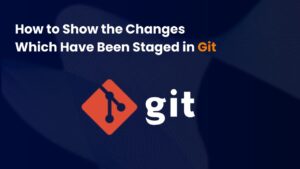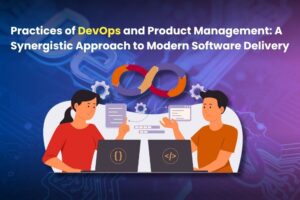In today’s fast-paced software development world, DevOps has evolved into DevOps, integrating security at every stage of the development lifecycle. Developers, security teams, and operations teams all share responsibility for security, thanks to the shift-left methodology in DevOps. However, to effectively embed security into CI/CD pipelines and maintain velocity, using the right tools is crucial.
This article explores the top 15 DevOps tools that can help organizations secure their applications from the first line of code to production deployment.
1. SonarQube
Static Application Security Testing (SAST) is the category.
Use Case: SonarQube examines and evaluates source code to find errors, smells, and security flaws. It interfaces with CI/CD technologies like Jenkins, GitLab, and Azure DevOps and supports more than 25 languages.
Why Use It:
- Real-time code analysis
- Security rules based on CWE, OWASP, and SANS
- Developer-friendly dashboards
2. Checkmarx
Category: SAST
Use Case: Checkmarx offers a comprehensive platform for scanning application source code for security flaws. It integrates seamlessly with developers’ workflows and supports modern development languages and frameworks.
Why Use It:
- Scans source, binary, and byte code
- Deep vulnerability detection
- Supports Infrastructure as Code (IaC) scanning
3. Snyk
Category: Software Composition Analysis (SCA)
Use Case: Snyk checks container images and open-source libraries for vulnerabilities. It offers quick feedback and automated remediation suggestions.
Why Use It:
- Real-time open-source vulnerability scanning
- Container and IaC security
- Integration of CI/CD and GIT
4. Aqua Trivy
Category: Vulnerability scanning and container security
Use Case: Trivy is an open-source vulnerability scanner for file systems, Git repositories, and containers, among other artifacts.
Why Use It:
- Scans OS packages and app dependencies
- Extremely fast and easy to integrate
- Ideal for CI pipelines
5. OWASP ZAP (Zed Attack Proxy)
Category: Dynamic Application Security Testing (DAST)
Use Case: OWASP ZAP is a free DAST tool used to find vulnerabilities in running web applications through simulated attacks.
Why Use It:
- Easy to automate
- Active and passive scanning
- REST API support
6. Burp Suite
Category: DAST
Use Case: Burp Suite is a professional-grade web vulnerability scanner and manual testing tool. It is widely used by security experts to identify common vulnerabilities such as XSS and SQL injection.
Why Use It:
- Comprehensive DAST capabilities
- Manual testing with automated features
- Extensible with plugins
7. GitHub Advanced Security
Category: Code Security
Use Case: Integrated into GitHub, this suite offers secret scanning, dependency scanning, and code scanning to help secure repositories from within.
Why Use It:
- Native GitHub integration
- Powered by CodeQL
- Real-time alerts and suggested fixes
8. Anchore
Category: Container Security
Use Case: Anchore focuses on container image scanning and policy enforcement. It ensures that only compliant containers are deployed.
Why Use It:
- Integrates into CI/CD workflows
- Custom policy creation
- Supports Docker and Kubernetes environments
9. Tenable.io/Nessus
Category: Vulnerability Management
Use Case: Tenable’s tools offer broad vulnerability management for infrastructure, networks, and cloud environments.
Why Use It:
- Wide vulnerability coverage
- Asset inventory and risk scoring
- Cloud-native support
10. Terraform with Sentinel
Category: Infrastructure as Code (IaC) Security
Use Case: Terraform by HashiCorp manages IaC, and Sentinel adds policy as code to enforce security and compliance rules.
Why Use It:
- Fine-grained policy control
- Integration with CI/CD pipelines
- Prevents risky deployments
11. Kube-bench
Category: Kubernetes Security
Use Case: Kube-bench compares Kubernetes clusters to the standards set by the Center for Internet Security (CIS).
Why Use It:
- Ensures Kubernetes configuration best practices
- Generates detailed audit reports
- CLI-friendly and easy to automate
12. Falco
Category: Runtime Security
Use Case: Falco monitors containers and Kubernetes nodes for suspicious behavior in real time using system call monitoring.
Why Use It:
- Real-time anomaly detection
- Container-native runtime protection
- Cloud-native and scalable
13. Fortify by OpenText
Category: Application Security Testing
Use Case: Fortify provides static and dynamic scanning, along with real-time analysis, for securing enterprise applications.
Why Use It:
- Supports a wide range of languages
- Enterprise-level scalability
- Strong IDE and CI/CD integrations
14. Sysdig Secure
Category: Cloud-Native Security
Use Case: Sysdig Secure provides image scanning, Kubernetes security, runtime threat detection, and compliance.
Why Use It:
- Unified visibility across infrastructure
- Enforces Kubernetes policies
- Real-time threat detection and response
15. Veracode
Category: All-in-One Application Security
Use Case: Veracode offers a SaaS-based application security platform with SAST, DAST, and SCA capabilities.
Why Use It:
- Fast scanning with low false positives
- Good for developer enablement
- Policy-driven remediation workflows
Choosing the Right Toolset
Selecting the best DevOps tools depends on your organization’s specific needs, maturity level, and tech stack. The following recommended practices can help you make decisions:
- Start with SAST and SCA tools: Catching bugs and vulnerable dependencies early saves time and resources.
- Integrate tools into CI/CD: Automate scanning and feedback loops to keep the development velocity high.
- Embrace container and IaC scanning: With the rise of cloud-native apps, security must extend beyond just code.
- Use DAST tools in staging/production: Validate runtime behavior to catch vulnerabilities that static tools may miss.
- Monitor continuously: Tools like Falco and Sysdig provide runtime protection to defend against threats in real time.
Final Thoughts
Security in the DevOps era is not optional—it’s foundational. The technologies mentioned above play a crucial role in facilitating the transition to DevOps, which bridges the gap between speed and security. By integrating these tools into your SDLC and making security everyone’s responsibility, you can deliver faster and safer applications.
Whether you’re starting your DevOps journey or looking to enhance an existing pipeline, these tools can help you build a resilient and secure development ecosystem.






